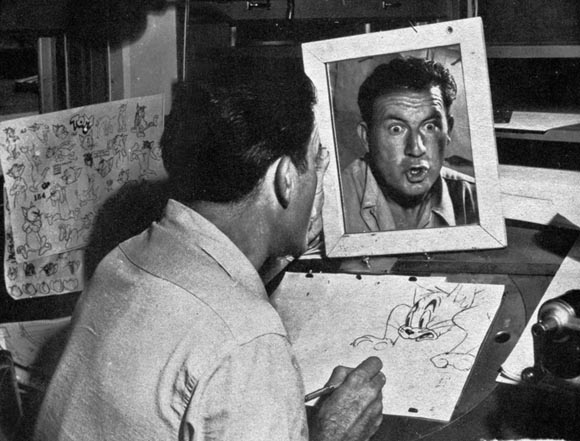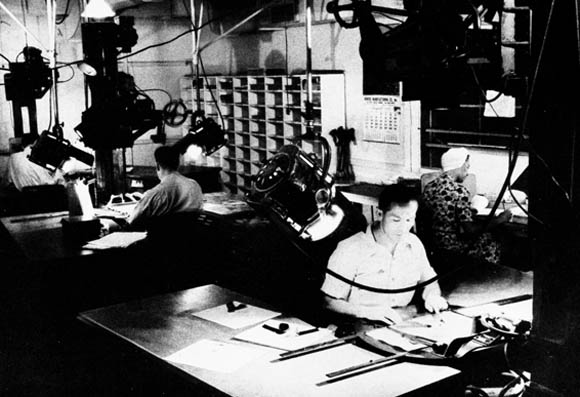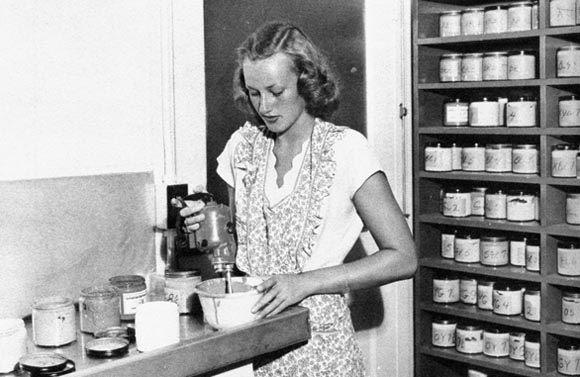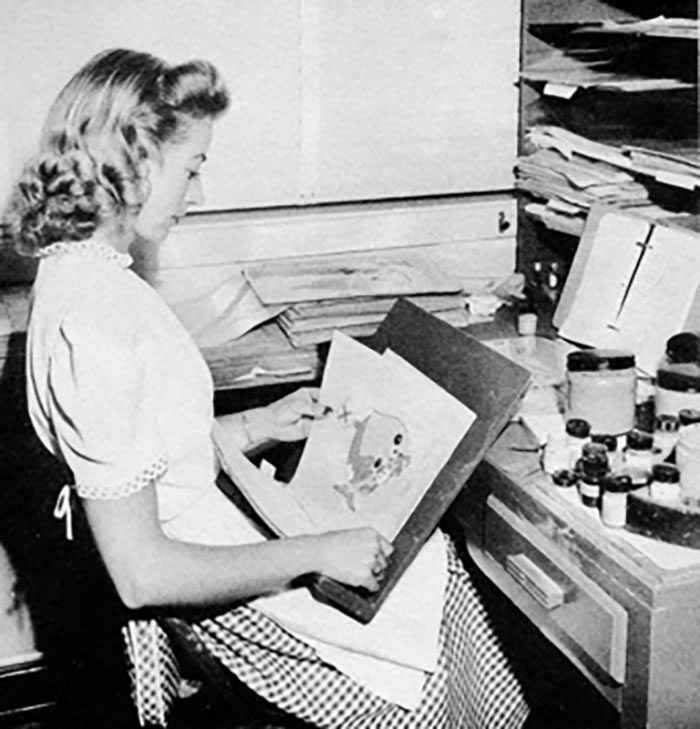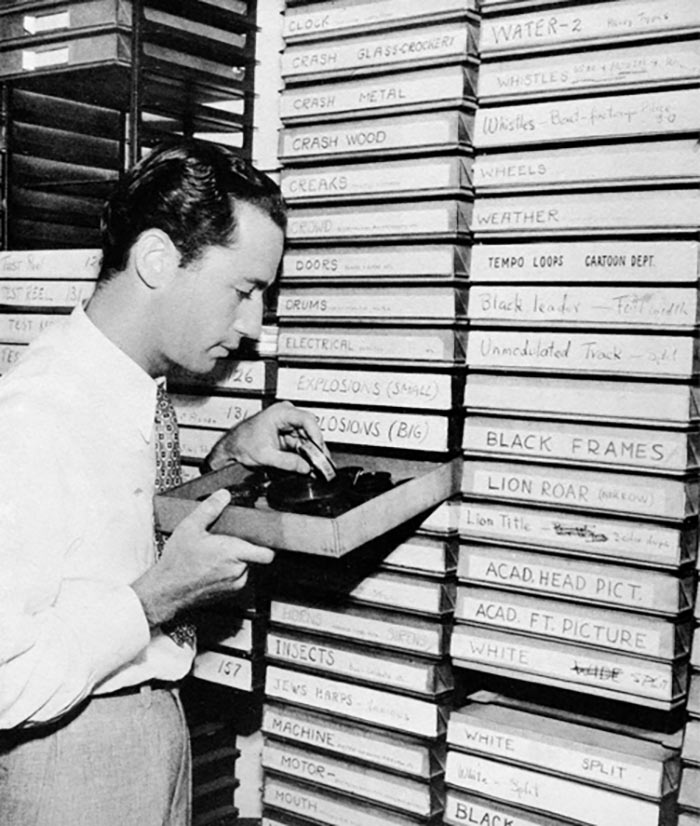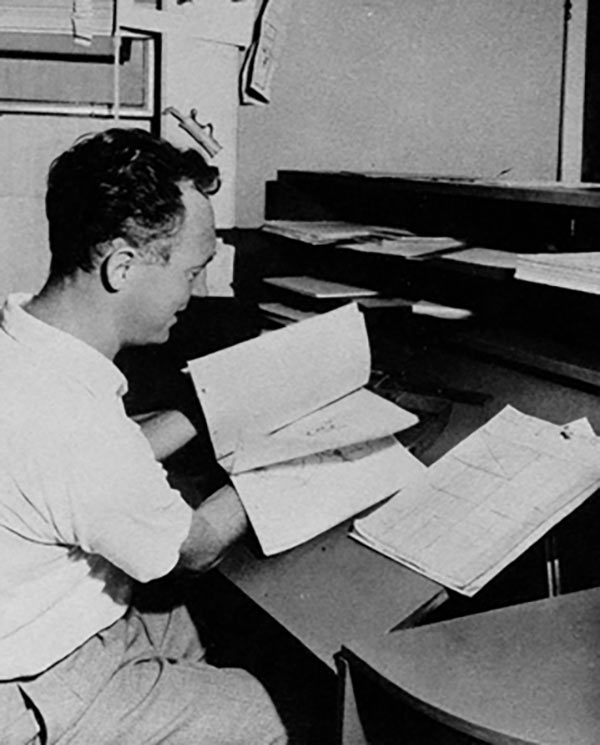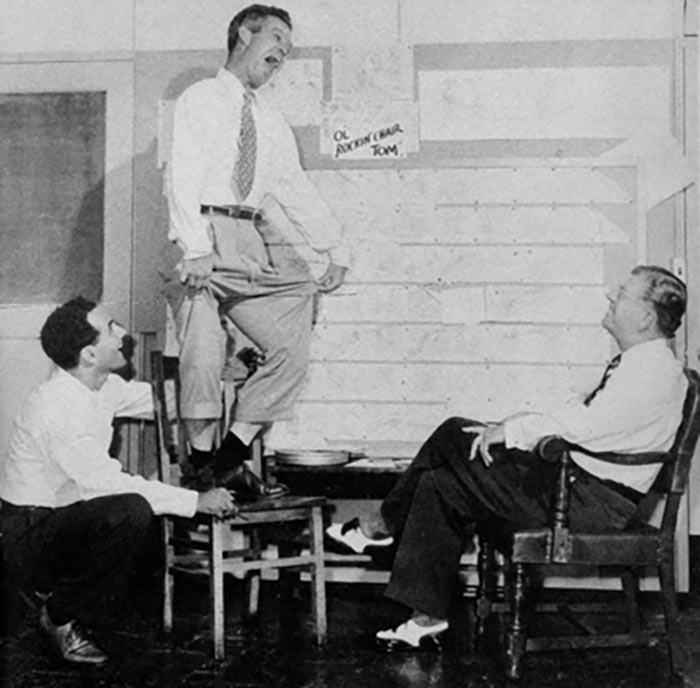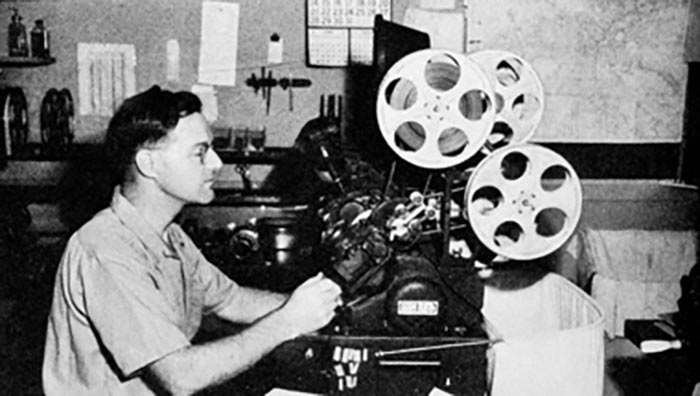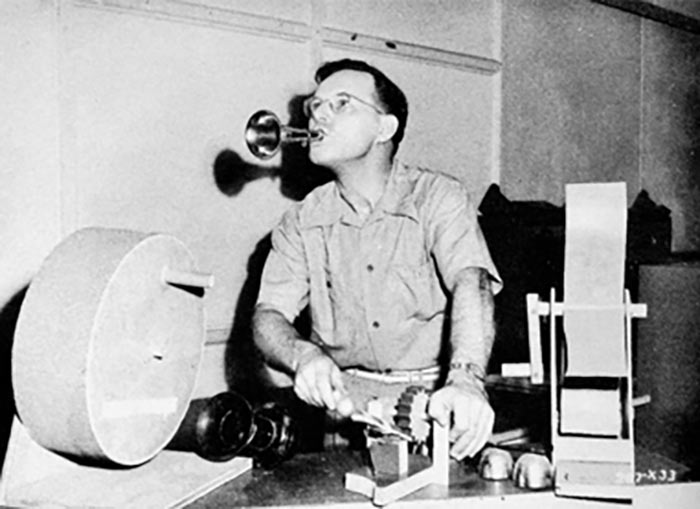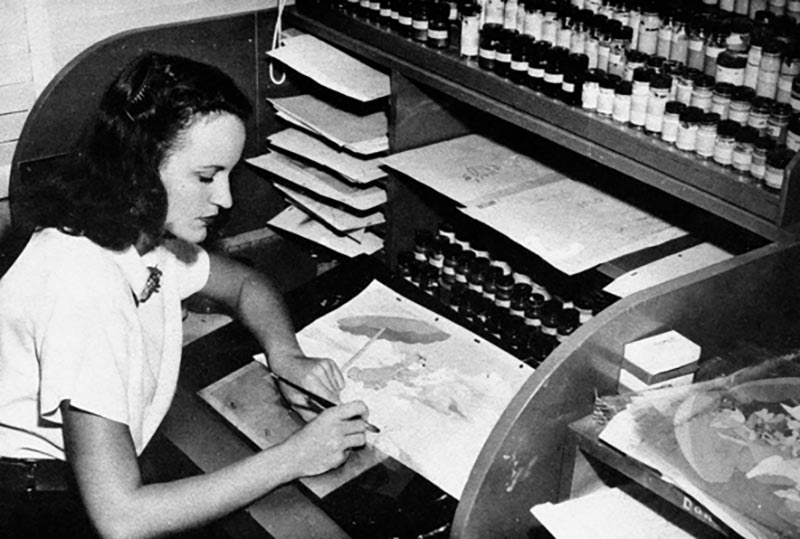
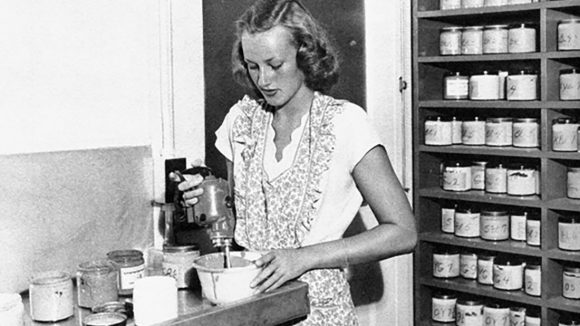
The Tactile, Physical Labor of Classic Cartoonmaking
Here’s a fantastic treasure trove of images from the Golden Age MGM animation studio, the studio that produced Tom & Jerry and Droopy shorts.
The thing that I love most about these photos—and what makes them so different from any modern form of 2D animation production—is the tactility of the work. The energy of classic Hollywood cartoons originated firstly with the intense manual labor required to produce the films.
Every step of animation production required some level of physical exertion or interaction with a physical object, from jumping on a desk to act out a scene and mixing paints with a blender to searching through boxes of sound effects and making facial expressions at a desk.
As more and more of these processes gravitate behind the slick surface of the screen, we no longer have access to the immediacy and intimacy of this earlier hands-on mode of production. And there are, perhaps, valid arguments for why digital production methods are superior to these classical methods. Yet, even if we can no longer return to this era, the glimpses here serve as a reminder that there’s more than one way to create animation besides the current methods employed, and sometimes those other methods can produce wonderful results.
